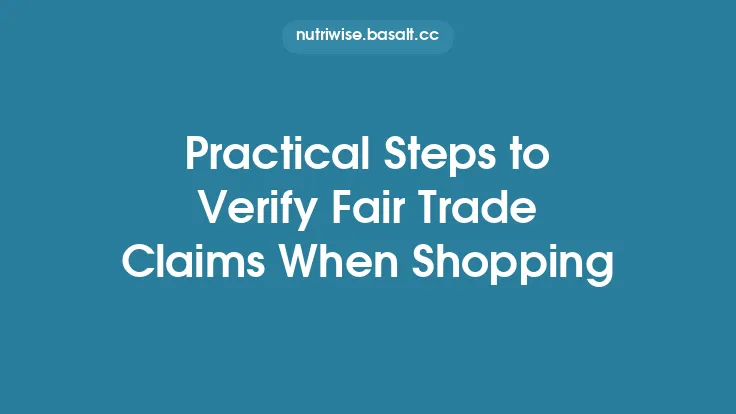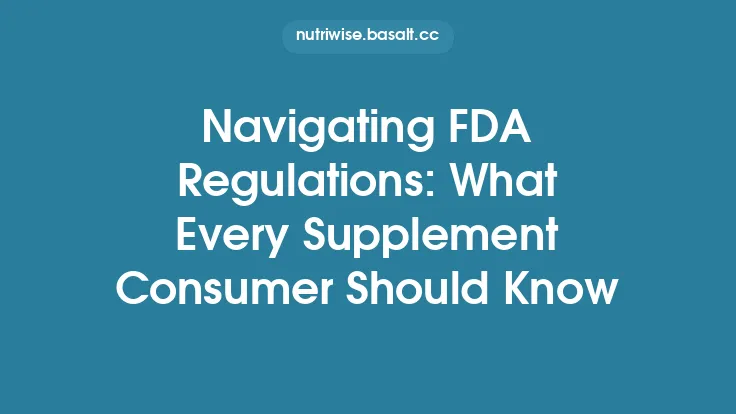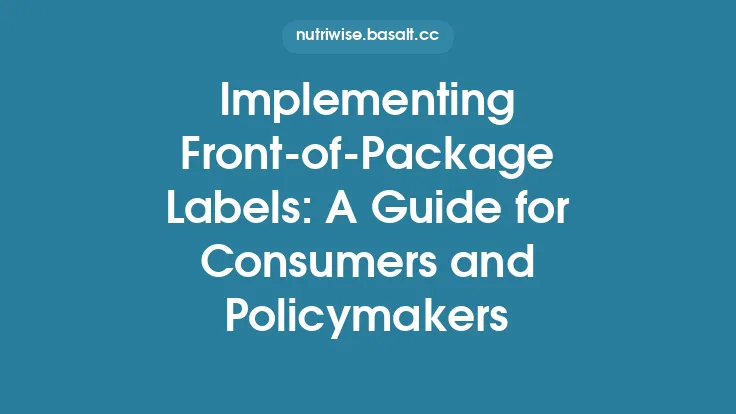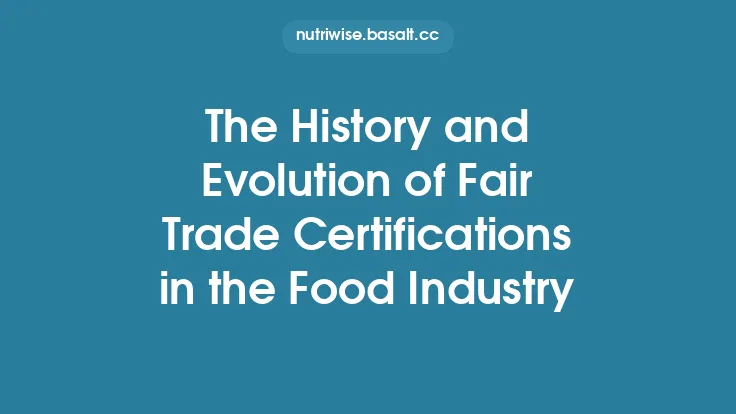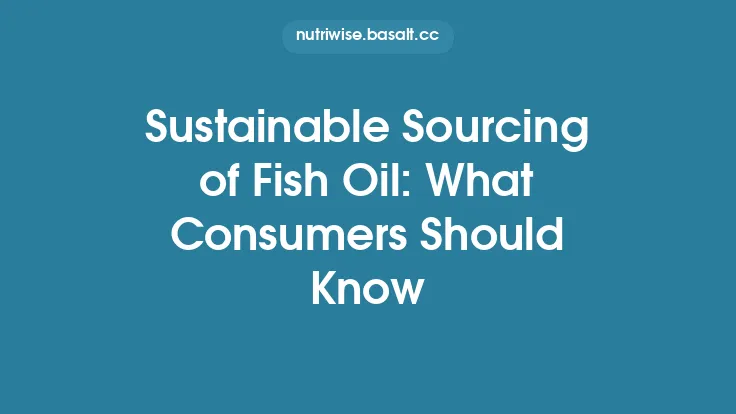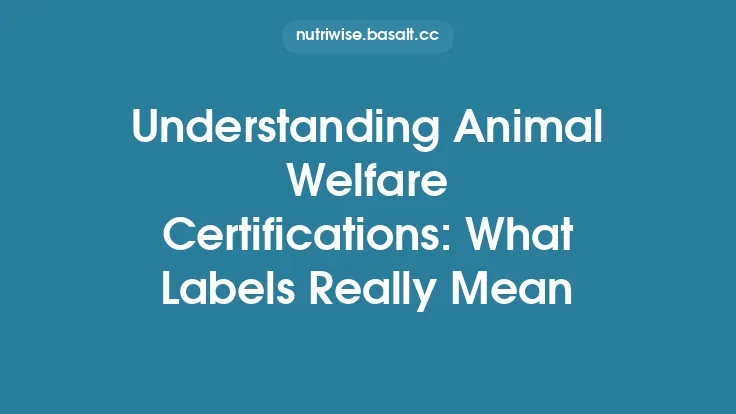Fair trade labels have become a familiar sight on grocery shelves, yet many shoppers still wonder what each symbol really means and how the certifications differ. Understanding the nuances behind these marks can empower consumers to make choices that align with their values—supporting producers who adhere to rigorous social, environmental, and economic standards. Below is a comprehensive guide to the most widely recognized fair‑trade labels, the organizations that issue them, and the key criteria that set each one apart.
Overview of Major Fair Trade Certification Bodies
The landscape of fair‑trade certification is anchored by a handful of internationally respected organizations. While each body shares a common goal—promoting equitable trade practices—their standards, audit procedures, and labeling conventions vary. The most influential certifiers include:
| Certifier | Year Established | Headquarters | Primary Focus | Typical Products |
|---|---|---|---|---|
| Fairtrade International | 1997 | Bonn, Germany | Multi‑commodity, global standards | Coffee, cocoa, bananas, tea, sugar, spices |
| Rainforest Alliance | 1987 | New York, USA (global network) | Integrated environmental‑social standards | Coffee, cocoa, tea, bananas, nuts, spices |
| Fair Trade USA | 1998 | Washington, D.C., USA | U.S. market‑specific standards, broader product range | Coffee, chocolate, produce, apparel |
| World Fair Trade Organization (WFTO) | 2004 | Brussels, Belgium | Organization‑level (cooperatives, enterprises) | Primarily small‑scale producers, crafts |
| Fair for Life (BSCI & FFL) | 2005 | Berlin, Germany | Social compliance across supply chains | Various agricultural and processed foods |
| UTZ Certified (now merged with Rainforest Alliance) | 2002 | Zurich, Switzerland | Agricultural sustainability, farmer welfare | Coffee, cocoa, tea, hazelnuts |
These bodies are accredited by national accreditation agencies (e.g., UKAS, ANAB) to ensure that their certification processes meet internationally recognized competence criteria.
The Fairtrade International (Fairtrade Mark) Label
Key Features
- Minimum Price Guarantee: A floor price that protects producers from market volatility.
- Fairtrade Premium: An additional sum paid on top of the selling price, earmarked for community development projects (e.g., schools, healthcare).
- Social Standards: Prohibitions on child labor, forced labor, and discrimination; requirements for safe working conditions.
- Environmental Standards: Restrictions on hazardous agro‑chemicals, promotion of biodiversity, and water stewardship.
Certification Process
- Application – Producer groups (often cooperatives) submit a detailed farm plan.
- Audit – Independent auditors conduct on‑site inspections, reviewing financial records, labor contracts, and environmental practices.
- Verification – Findings are cross‑checked against the Fairtrade Standard; any non‑conformities must be remedied before certification is granted.
- Annual Surveillance – Continuous monitoring ensures compliance; non‑compliant entities risk suspension or revocation of the mark.
Label Appearance
A blue globe with the word “Fairtrade” encircling it. The label may be accompanied by a “Fairtrade Certified” badge for processed goods, indicating that at least 20 % of the product’s ingredients meet Fairtrade standards.
Rainforest Alliance Certified Seal
Core Emphasis
Rainforest Alliance integrates environmental stewardship with social responsibility. Its standards are built around four pillars: biodiversity conservation, sustainable livelihoods, natural resource management, and climate resilience.
Distinctive Criteria
- Forest Conservation: Protection of at least 30 % of the farm’s natural forest cover.
- Pesticide Management: Strict limits on high‑risk chemicals; mandatory integrated pest management (IPM) plans.
- Worker Welfare: Minimum wage compliance with local law, safe storage of chemicals, and provision of protective equipment.
Audit Cycle
Audits occur on a biennial basis, with a mid‑cycle spot check to verify ongoing compliance. The certification body uses a risk‑based approach, focusing more intensive scrutiny on farms with prior non‑conformities.
Label Design
A green leaf with the words “Rainforest Alliance Certified” beneath a stylized tree. The seal may be accompanied by a “Certified Sustainable” tagline for products that meet the full suite of criteria.
Fair Trade USA (Fair Trade Certified) Seal
U.S. Market Orientation
Fair Trade USA tailors its standards to the regulatory environment and consumer expectations of the United States, while maintaining alignment with the broader Fairtrade International framework.
Notable Requirements
- Gender Equality: Minimum 30 % of leadership positions in producer groups must be held by women.
- Traceability: End‑to‑end documentation from farm to final product, enabling retailers to verify the origin of each batch.
- Community Development: Premium funds must be allocated to projects that are democratically decided by the producer community.
Certification Mechanics
The process mirrors that of Fairtrade International but includes an additional public disclosure step: certified entities must publish an annual impact report accessible to consumers.
Visual Identifier
A blue and white badge featuring the phrase “Fair Trade Certified” with a stylized globe. The seal is often placed alongside the USDA Organic label on dual‑certified products.
World Fair Trade Organization (WFTO) Label
Enterprise‑Level Certification
Unlike commodity‑specific marks, the WFTO label certifies entire organizations—typically cooperatives, social enterprises, or small businesses—that adhere to the 10 Principles of Fair Trade.
Key Elements
- Transparent Pricing: Direct negotiation with producers, ensuring that prices reflect true production costs.
- Capacity Building: Ongoing training and technical assistance for producers.
- Long‑Term Partnerships: Contracts that span multiple harvest cycles, fostering stability.
Verification Process
WFTO conducts a peer‑review assessment, where member organizations evaluate each other against the principles. This is supplemented by external audits for compliance verification.
Label Appearance
A circular emblem with the letters “WFTO” encircling a stylized globe. The label is typically placed on packaging for artisanal foods, crafts, and specialty items.
Fair for Life (FfL) – Social Compliance Certification
Scope
Fair for Life focuses on social compliance across the entire supply chain, from primary producers to finished goods. It is often used in conjunction with other sustainability certifications.
Core Standards
- Labor Rights: Alignment with ILO conventions on freedom of association, collective bargaining, and non‑discrimination.
- Health & Safety: Mandatory risk assessments, provision of first‑aid kits, and regular safety training.
- Legal Compliance: Verification that all operations meet local labor and environmental legislation.
Audit Structure
Audits are performed annually by accredited third‑party firms, with a continuous improvement framework that requires corrective action plans for any identified gaps.
Label Design
A stylized “FfL” within a shield, often accompanied by a small “Social Compliance” tagline.
Regional and Commodity‑Specific Labels
While the global certifications dominate the market, several regional or commodity‑focused labels provide additional layers of assurance:
| Label | Region | Commodity Focus | Distinctive Feature |
|---|---|---|---|
| Fairtrade Canada | Canada | Coffee, cocoa, tea | Emphasis on Canadian import regulations |
| EU Organic + Fairtrade | European Union | Multi‑commodity | Dual certification that merges EU organic standards with Fairtrade criteria |
| Coffee & Cocoa Farmers Alliance (CCFA) Seal | West Africa | Coffee, cocoa | Guarantees a minimum price plus a community development fund |
| Latin American Fair Trade (LAFT) Mark | Latin America | Bananas, sugar | Incorporates local small‑holder cooperatives into the certification chain |
These labels often reference the primary global standard (e.g., Fairtrade International) but add regional compliance requirements, such as stricter environmental thresholds or additional community benefit clauses.
Understanding Label Variations and Hybrid Certifications
Manufacturers sometimes combine multiple certifications on a single product (e.g., “Rainforest Alliance Certified & USDA Organic”). When this occurs, each label maintains its own integrity; the product must meet the full set of criteria for each certification independently. Hybrid labels can be confusing, but they also signal a higher level of sustainability because the product has passed multiple, distinct audits.
Key Points to Remember
- No Hierarchy Implied – A product bearing the Rainforest Alliance seal is not “better” or “worse” than one with the Fairtrade mark; they simply assess different aspects of sustainability.
- Audit Frequency Matters – Some certifications require annual audits (e.g., Fair for Life), while others operate on a biennial schedule (e.g., Rainforest Alliance). More frequent audits can indicate tighter ongoing oversight.
- Scope of Coverage – Commodity‑specific labels (e.g., Fairtrade coffee) guarantee that 100 % of the coffee beans meet the standard, whereas broader labels may allow a minimum percentage (often 20 % for processed foods).
How Audits and Standards Differ Across Labels
| Aspect | Fairtrade International | Rainforest Alliance | Fair Trade USA | WFTO |
|---|---|---|---|---|
| Audit Body | Independent, accredited auditors | Independent auditors + internal monitoring | Independent auditors + public impact reporting | Peer‑review + external audit |
| Frequency | Annual + surveillance | Biennial + mid‑cycle spot checks | Annual + continuous traceability checks | Every 3 years (peer) + annual external audit |
| Minimum Price | Yes (commodity‑specific) | No (focus on sustainability) | No (price determined by market) | No (price negotiated directly) |
| Premium Allocation | Community‑controlled fund | Community projects optional | Community‑controlled fund | Community projects part of business plan |
| Gender Equality Requirement | Implicit in standards | Not explicit | Minimum 30 % women in leadership | Embedded in 10 Principles |
| Traceability | Required for processed goods | Required for all certified farms | Mandatory end‑to‑end traceability | Required for entire organization |
Understanding these differences helps consumers interpret what each label is actually guaranteeing beyond the generic “fair‑trade” claim.
Decoding the Fine Print: What the Labels Actually Guarantee
- Fairtrade Mark – Guarantees a price floor, a premium for community use, and compliance with a set of social and environmental standards.
- Rainforest Alliance – Guarantees environmental stewardship (forest protection, pesticide management) and basic worker welfare, but does not guarantee a price premium.
- Fair Trade USA – Guarantees traceability, gender equity, and community‑controlled premium funds, with a focus on U.S. market transparency.
- WFTO – Guarantees that the entire organization operates under the 10 Principles, covering fair pricing, democratic decision‑making, and long‑term partnerships.
- Fair for Life – Guarantees social compliance with ILO conventions and local labor laws across the supply chain.
When a product displays multiple seals, each guarantee applies independently. For example, a coffee bag bearing both the Fairtrade Mark and Rainforest Alliance seal assures the consumer of both a price floor (Fairtrade) and robust forest‑conservation practices (Rainforest Alliance).
Common Misconceptions About Fair Trade Labels
| Misconception | Reality |
|---|---|
| All fair‑trade products are 100 % organic | Fair trade and organic are separate certifications; a product can be fair‑trade but not organic, and vice versa. |
| Fair trade means the product is cheap | Fair‑trade products often carry a price premium to reflect the higher costs of sustainable practices and community development. |
| The label guarantees that every farmer in the supply chain is paid fairly | Certification applies to the producers directly linked to the certified batch; downstream actors (e.g., processors) may not be covered unless they hold a separate certification. |
| If a product has a fair‑trade logo, it must be ethically sourced | While the label indicates compliance with specific standards, it does not guarantee the absence of all ethical concerns (e.g., broader environmental impacts outside the scope of the standard). |
| All fair‑trade certifications are identical | As shown in the tables above, each certifier emphasizes different criteria and employs distinct audit regimes. |
Practical Tips for Spotting Authentic Labels in Stores
- Check the Logo’s Exact Wording – Authentic labels use precise phrasing (e.g., “Fairtrade Certified” vs. “Fair Trade”). Look for the full name of the certifying body.
- Look for the Certification Number – Many labels include a unique registration or license number that can be cross‑checked on the certifier’s website.
- Verify the Seal’s Placement – Certified products must display the seal prominently on the front or primary packaging; hidden or tiny logos may indicate misuse.
- Beware of “Fair‑Trade” as a Marketing Term – Some brands use the phrase in marketing copy without an accompanying official seal. Only the presence of a certified logo guarantees compliance.
- Use Mobile Apps or QR Codes – Several certifiers provide scanning tools that reveal the product’s certification status, audit date, and producer details.
The Role of Labels in Consumer Decision‑Making
Fair‑trade labels serve as information shortcuts that reduce the cognitive load required to assess complex supply‑chain data. By aggregating a suite of standards into a single visual cue, they enable shoppers to:
- Align Purchases with Values – Consumers can quickly select products that support equitable labor practices and environmental stewardship.
- Drive Market Signals – Increased demand for labeled products incentivizes producers to adopt certified practices, creating a feedback loop that expands fair‑trade participation.
- Facilitate Transparency – Labels backed by rigorous audits and public reporting increase overall market transparency, even for products that do not carry a label.
While labels are not a panacea, they remain a critical tool for translating ethical intentions into tangible purchasing behavior.
In summary, the fair‑trade label ecosystem is diverse, with each certification offering a distinct set of guarantees—from price stability and community premiums to forest conservation and social compliance. By familiarizing yourself with the visual cues, audit frequencies, and core criteria of each label, you can navigate the grocery aisle with confidence, ensuring that the foods you enjoy truly reflect the fair‑trade principles you value.
